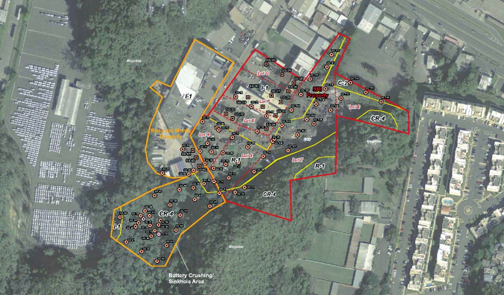EPA to spend $3M to clean up Scorpio Recycling site

The U.S. Environmental Protection Agency has finalized its plan to address contaminated soil at the Scorpio Recycling Superfund site in Toa Baja, and will begin clean up efforts that will cost an estimated $3 million, the agency announced Tuesday.
The money will come from the EPA’s federal Superfund program.
Scorpio Recycling, Inc. was a metals recycling company that operated from 1972 until 2010. The site was added to the EPA’s Superfund list in 1999 after high concentrations of heavy metals and other contaminants were found in the soil, as a result of previous metal recycling and battery crushing activities at the site, which resulted in contamination of the soil with lead and other metals.
Lead is a toxic metal that can cause damage to a child’s ability to learn and a range of health problems in adults. Exposure to heavy metals can cause serious health effects. Under the plan, contaminated soil from the site will be consolidated in two controlled areas and covered to reduce potential exposure to the hazardous materials.
The EPA held a public meeting on Aug. 14, 2013 in Toa Baja to explain its proposed plan. It took public comments for 30 days and considered public input before finalizing the decision.
Under the EPA plan, contaminated soil that poses a potential risk to people’s health will be moved and consolidated in two areas of the site, a conservation area and an industrial area. Clean soil will be placed over contaminated soil in the conservation area and a gravel cover will be placed over soil in the industrial area.
“Long-term monitoring will ensure that the covers prevent direct contact with underlying waste. The plan also requires new deed restrictions that will prevent activities that could disturb the covers and prohibit any future on-site residential construction,” the agency said in a release issued Tuesday.
The EPA will conduct a review every five years to ensure the effectiveness of the cleanup.
The Superfund program operates on the principle that polluters should pay for the cleanups, rather than passing the costs to taxpayers. After sites are placed on the Superfund list of the most contaminated waste sites, the EPA searches for parties responsible for the contamination and holds them accountable for the costs of investigations and cleanups. In this instance, the EPA did not identify a viable party to pay the cleanup costs.













